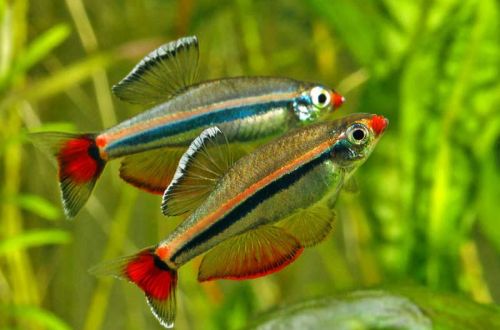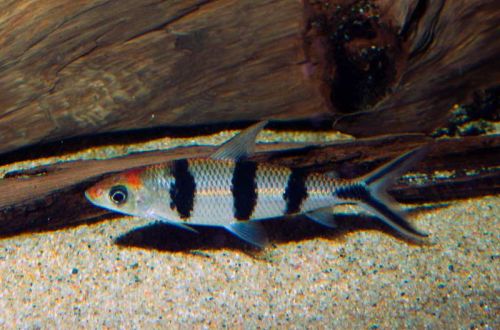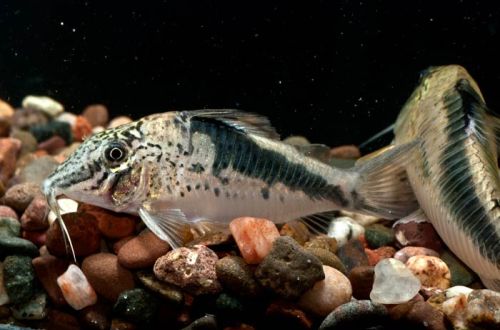
Vietnamese cardinal
The Vietnamese cardinal, scientific name Tanichthys micagemmae, belongs to the family Cyprinidae (Cyprinidae). It was first discovered in 2001 and soon appeared in home aquaria, joining its more popular relative, the common Cardinal (Tanichthys albonubes).

Contents
Habitat
The fish is native to Southeast Asia. The natural habitat is limited to the Ben Hai River basin. A typical biotope is a wide, shallow stream with moderate to fast flow, sandy substrates, and dense riparian vegetation.
It is currently endangered and only found in a few regions. The reason is the degradation of the coastal zone due to active agricultural activity (rice crops).
Description
Adult individuals reach a length of only 2–3 cm. Outwardly, they resemble their closest relative, the already mentioned Cardinal, but are somewhat smaller and differ in details of color and body pattern. The Vietnamese cardinal has a faint red pigmentation on the dorsal fin with a pronounced white border, as well as a distinct black stripe along the lateral line.
Sexual dimorphism is characteristic of this species. Males are easily distinguished from females by their more slender body shape, bright coloration, and markedly enlarged fins.
Behavior and Compatibility
Peaceful friendly fish. Perfectly combined with most species of similar size and temperament.
It is worth avoiding the joint presence in the same aquarium of the Cardinal Vietnamese and territorial, aggressive or overly mobile species, for example, some barbs.
Brief information:
- The volume of the aquarium – from 40 liters.
- Temperature – 18-23°C
- Value pH — 6.5–7.5
- Water hardness – soft (2-10 dGH)
- Substrate type – any dark
- Lighting – subdued
- Brackish water – no
- Water movement – light or moderate
- The size of the fish is up to 3 cm.
- Meals – any
- Temperament – peaceful
- Keeping in a group of 8-10 individuals
Maintenance and care, arrangement of the aquarium
The minimum size of an aquarium for a flock of 8-10 fish starts from 40 liters. Formatting is not essential. However, it is noted that the brightest colors appear in an environment with dense thickets of plants, dark soil and not too bright lighting.
It is not demanding on the hydrochemical composition of water, so the process of maintaining an aquarium is greatly simplified in terms of water treatment. For long-term maintenance, it is important to ensure high water quality and prevent the accumulation of organic waste. A productive filtration system can cope with this task. The aquarist will be required to carry out regular preventive maintenance of equipment, weekly replace part of the water with fresh water and clean the soil.
Important! Although the fish comes from the tropics, the comfortable temperature range for it is considered to be in the range of 18-23°C!
Food
Easy to feed. With pleasure he accepts most popular feeds in dry, frozen and live form.





